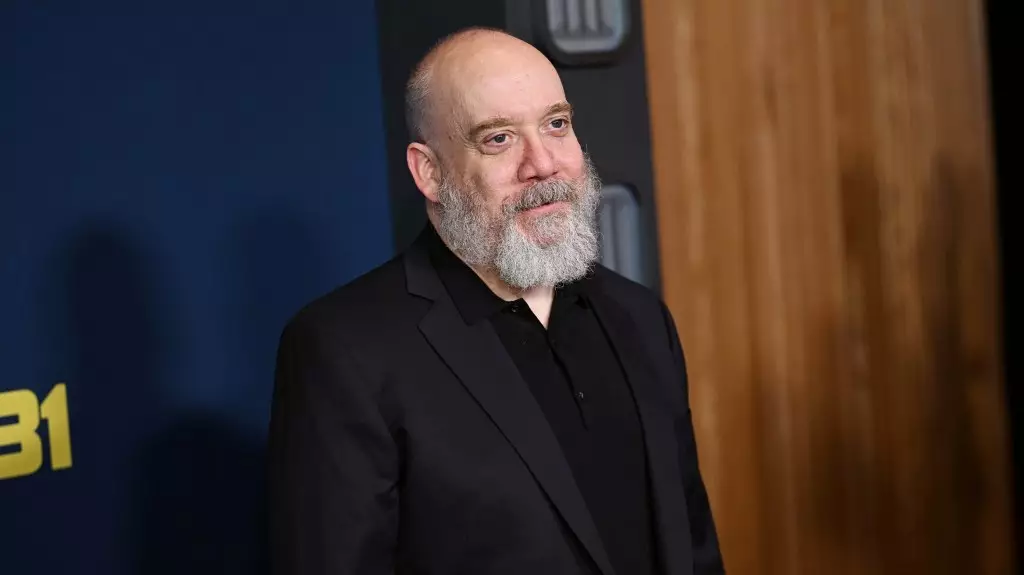In the world of television, certain actors transcend their roles, embedding themselves in the cultural fabric of their respective series. One such luminary was Dame Maggie Smith, whose portrayal of Violet Crawley in “Downton Abbey” has left an indelible mark. Paul Giamatti’s recent reflections on the production of “Downton Abbey: The Grand Finale” resonate deeply, articulating a complex blend of loss, homage, and the challenge of moving forward without a central figure. His comments encapsulate the bittersweet essence of a sequel that aims to honor a legend who can no longer grace the screen.
Giamatti, who was somewhat of a surprise addition to the cast, acknowledges the void Smith left behind, suggesting that it feels both inappropriate and poignant to re-examine this beloved world without its matriarch. When he states, “It was not the same without her,” Giamatti captures the shared sentiment of the cast and crew, reinforcing that while they may continue to perform, the absence of Smith casts a shadow over the entire production. This shared grief manifests as an emotional current throughout the film, serving both as a reminder of what was lost and a celebration of what Smith contributed to the series.
The Weight of Legacy in Storytelling
As the production paddles through Smith’s shadow, they face the task of crafting a narrative that honors her character while presenting a seamless continuation of the story. The executive producer, Gareth Neame, has indicated that the poignancy of this farewell has been deepened by the loss of the actress herself. The film’s ability to reflect that farewell aptly speaks to the power of storytelling; it suggests an intersection of character and actor that many productions fail to navigate. In this case, the lines blur, as the audience lives the dual reality of mourning both Violet Crawley and Maggie Smith.
Giamatti’s outsider perspective is notable; he initially questioned the merit of revisiting the Downton universe, given his “one-off” role in an earlier Christmas special. Yet, the film’s arc has quietly evolved to accommodate his character in a surprisingly significant manner. This evolution is a testament to the writing team’s capabilities but also underscores the reality that meaningful narratives don’t just happen by chance. They require contemplation and a deft touch to integrate an additional layer of complexity, weaving in the poignant loss they collectively face while daring to advance the plot.
Recurring Themes: Family, Grief, and Resilience
The themes of family dynamics and grief that have run throughout “Downton Abbey” now reach new heights in this final chapter. The restoration of the familiar ensemble alongside new faces like Joely Richardson and Alessandro Nivola weaves an intricate tapestry of relationships—past and present. These dynamics set the stage for a more profound exploration of how familial bonds grapple with the impact of loss. The character interactions promise to resonate on multiple levels, providing a space not only for mourning but for hope, growth, and resilience.
It begs consideration; what does it mean to carry on a legacy? The narrative’s depth allows the audience to traverse the complexities of life where love, loss, and endurance intermingle. Viewers will undoubtedly experience nostalgia along with new emotional layers as they witness the Farnham family not only memorialize their beloved matriarch but also redefine themselves in her absence.
On the Horizon: A Glimpse into Future Narratives
As the release of “Downton Abbey 3” approaches, anticipation swells among fans and critics alike. While some may question whether revisiting such familiar territory is prudent, others see it as a necessary tribute—a means of validating the life of a character who has provided emotional depth over the years. The ambitious undertaking of crafting a film that resonates deeply with both the fictional and real-life dimensions of loss is no small feat. Still, if Giamatti’s insights are any indication, the creators appear determined to approach this daunting task with both reverence and creativity.
This final chapter of an iconic saga is not merely about closure but also about celebrating resilience in the face of grief, a theme that will resonate far beyond the screen. It offers a chance to reflect not only on the fictional lives lived among the Abbey’s walls but also on the profound emotional journeys that bind us all, revealing that while individuals may pass, the love shared and the stories told can endure and inspire through even the darkest corridors of sorrow.

